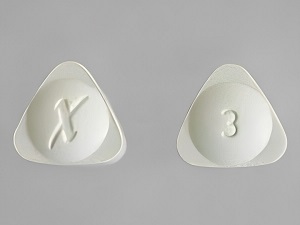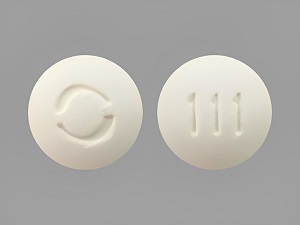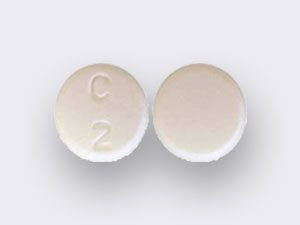The Power of Belbien Tablets in Insomnia Treatment
In the bustling rhythm of modern life, a good night’s sleep can feel like a luxury. Yet, quality sleep is not just a luxury but a necessity for overall well-being. Insomnia, characterized by difficulty falling asleep or staying asleep, can significantly impact one’s quality of life. Enter Belbien tablets, a promising solution in the realm of insomnia treatment.
Understanding Insomnia
Before delving into Belbien’s efficacy, let’s grasp the complexities of insomnia. It’s not merely a matter of tossing and turning at night. Insomnia can stem from various factors such as stress, anxiety, poor sleep habits, or underlying medical conditions. Its repercussions extend beyond feeling groggy the next day; chronic insomnia can lead to mood disturbances, cognitive impairment, and even exacerbate existing health issues.
The Role of Belbien Tablet
Belbien tablets belong to a class of medications called hypnotics, specifically designed to aid sleep. Their active ingredient, zolpidem, targets the brain’s neurotransmitters, promoting relaxation and inducing sleepiness. Unlike older generations of sleep aids, buy Belbien online is renowned for its rapid onset of action and shorter half-life, reducing the risk of morning drowsiness and dependency.
How does belbien tablet work?
Buy Belbien online that containing the active ingredient zolpidem, work by targeting specific receptors in the brain to induce sleep. Here’s how they operate:
- Targeted Neurotransmitter Action: Zolpidem acts primarily on gamma-aminobutyric acid (GABA) receptors, enhancing the inhibitory effects of GABA, a neurotransmitter that promotes relaxation and reduces neuronal activity.
- Sleep Initiation: By binding to GABA receptors, Belbien facilitates the opening of chloride channels, leading to membrane hyperpolarization and decreased neuronal excitability. This process promotes sleep initiation by calming brain activity.
- Quick Onset of Action: Belbien’s rapid absorption and onset of action allow for efficient sleep induction, making it effective for addressing sleep onset insomnia.
- Duration and Metabolism: The drug’s short half-life ensures that it is metabolized quickly, minimizing the risk of morning drowsiness or lingering effects the next day.
Overall, Belbien’s mechanism of action targets key neurotransmitter pathways involved in sleep regulation, promoting a restful and uninterrupted sleep experience.
Factors that affect the belbien tablet
Here are the factors that affect the Belbien tablet in the following ways:-
- Metabolic Variability: Individual differences in metabolism can affect how quickly Belbien is processed in the body, influencing its onset and duration of action.
- Liver Function: Liver health plays a role in drug metabolism; impaired liver function may require dosage adjustments to ensure safety and efficacy.
- Genetic Factors: Genetic variations can impact how zolpidem, the active ingredient in Belbien, is metabolized, leading to differences in drug response among individuals.
- Co-existing Medical Conditions: Conditions like liver or kidney disorders can alter drug metabolism, affecting Belbien’s effectiveness and safety.
- Drug Interactions: Concurrent use of other medications, especially sedatives or alcohol, can interact with Belbien, potentiating its effects or causing adverse reactions.
- Adherence and Sleep Hygiene: Following prescribed dosages, maintaining a consistent sleep schedule, and practicing good sleep hygiene are essential for optimizing Belbien’s therapeutic benefits.
Strength of the belbien tablet
Belbien tablets stand out as a formidable solution in the realm of insomnia treatment, showcasing several strengths that distinguish them in the market:-
- Efficient Sleep Induction: Belbien boasts a rapid onset of action, swiftly inducing sleep after ingestion, which is particularly beneficial for individuals struggling with sleep onset insomnia.
- Short Half-Life: The drug’s short half-life ensures efficient metabolism, reducing the likelihood of morning drowsiness or residual effects, contributing to a refreshed waking state.
- Minimal Morning Side Effects: Users typically experience minimal morning side effects, enhancing daytime functioning and productivity.
- Effective Sleep Maintenance: Belbien not only aids in sleep initiation but also supports uninterrupted sleep throughout the night, promoting restorative and quality sleep.
- Tailored Dosage Options: With various strengths available, Belbien allows for personalized dosing, ensuring optimal efficacy while minimizing the risk of adverse effects.
- Safety and Tolerance: Extensive research and clinical experience affirm Belbien’s safety and tolerability, making it a trusted and preferred choice among healthcare providers for managing insomnia.
Efficient Sleep Induction
One of Belbien’s primary advantages is its ability to initiate sleep swiftly. For individuals grappling with sleep onset insomnia, where falling asleep is the main challenge, Belbien offers a tangible solution. Its quick absorption and onset of action can help users transition from wakefulness to sleep without prolonged waiting periods or frustration.
Maintaining Sleep Quality
Quality sleep isn’t just about falling asleep; it’s about staying asleep throughout the night. Here’s where Belbien shines—it not only facilitates sleep initiation but also supports sleep maintenance. By reducing nighttime awakenings and improving sleep continuity, Belbien contributes to a more restorative sleep experience, leaving individuals refreshed and rejuvenated upon waking.
Minimal Morning Side Effects
A common concern with sleep medications is the lingering grogginess or drowsiness experienced the next day. Belbien tackles this issue adeptly. Its short half-life ensures that the drug metabolizes efficiently, minimizing the risk of residual effects upon waking. This aspect is particularly beneficial for individuals with busy schedules or demanding work routines.
Tailored Dosage for Individual Needs
Belbien tablets come in various strengths, allowing healthcare providers to tailor dosages according to individual needs. This customization ensures that users receive an optimal dose that effectively addresses their insomnia while minimizing the likelihood of adverse effects. Such personalized approaches enhance treatment outcomes and promote long-term adherence.
Addressing Anxiety and Stress
Insomnia often intertwines with psychological factors like anxiety and stress. Belbien tablets not only address sleep disturbances but also help alleviate associated emotional burdens. By inducing a state of relaxation and calmness, Belbien aids in breaking the cycle of sleeplessness fueled by heightened anxiety, fostering a more conducive environment for restful sleep.
What if I Take Other Drugs?
When taking Belbien or any medication, it’s crucial to consider potential interactions with other drugs. Here’s what you should know:
- Sedatives and Alcohol: Combining Belbien with other sedatives or alcohol can potentiate its effects, leading to excessive sedation, respiratory depression, or other serious complications. Avoiding alcohol and discussing any sedative use with your healthcare provider is essential.
- Other Central Nervous System Depressants: Drugs that affect the central nervous system, such as benzodiazepines, muscle relaxants, or certain antidepressants, may interact with Belbien, increasing the risk of sedation and respiratory depression.
- Medication Review: Always inform your healthcare provider about all medications, including over-the-counter drugs and supplements, to ensure safe and effective treatment with Belbien. They can assess potential interactions and adjust your treatment plan accordingly.
Taking precautions and communicating openly with your doctor can help minimize risks and optimize the benefits of Belbien therapy.
Safe and Well-Tolerated
Safety is paramount in any medication, especially those used for sleep disorders. Belbien has been extensively studied and proven to be safe and well-tolerated when used as directed. Its favorable side effect profile and low potential for dependency make it a preferred choice among healthcare providers for managing insomnia.
Tips for Optimal Use
While Belbien tablets offer significant benefits, maximizing their effectiveness requires mindful usage:-
- Follow prescribed dosages meticulously.
- Avoid alcohol and other sedatives while using Belbien.
- Create a conducive sleep environment with dim lighting and comfortable bedding.
- Practice good sleep hygiene, including consistent bedtime routines and limiting screen time before bed.
Conclusion
In the quest for restful nights and rejuvenated days, buy Belbien online that emerges as a beacon of hope for individuals battling insomnia. With their rapid sleep induction, minimal morning side effects, and holistic approach to sleep quality, Belbien stands at the forefront of modern insomnia treatment. However, it’s essential to use Belbien responsibly, under medical guidance, to harness its full potential in unlocking the restorative power of sleep.














